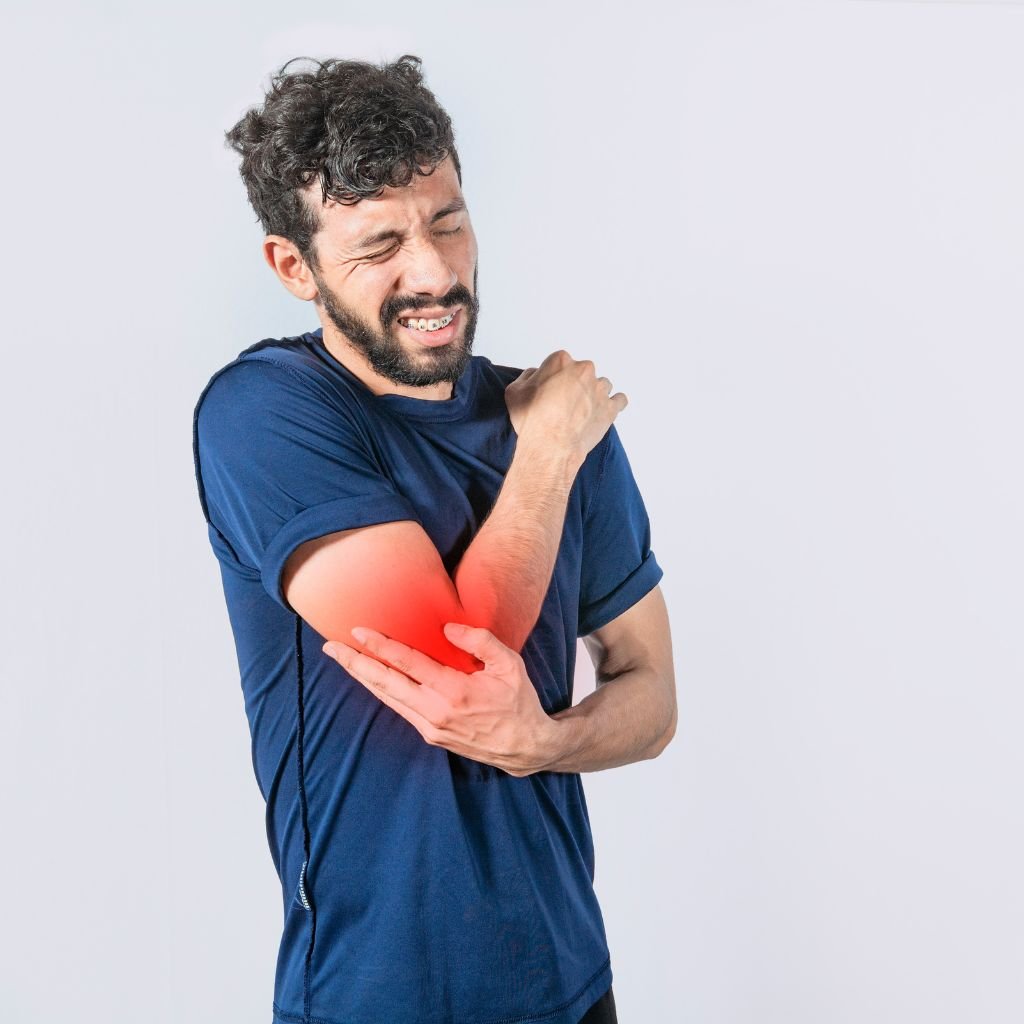
Tennis elbow, or lateral epicondylitis, is a painful condition caused by inflammation or microtears in the tendons that attach to the outer part of the elbow. Despite the name, it doesn’t only affect athletes—anyone performing repetitive wrist or arm motions (like typing, lifting, or tool use) is at risk.
This overuse injury typically occurs where the forearm muscles attach to the lateral epicondyle, a bony bump on the outside of the elbow. Over time, repetitive strain causes tiny tears in the tendon, leading to pain, tenderness, and reduced arm strength. Left untreated, it can severely interfere with everyday tasks like gripping, lifting, or even opening doors. Chiropractic care offers a safe and effective approach to reduce pain, promote healing, and restore proper function—without medications or injections.
Tennis elbow is primarily an overuse condition, but certain factors increase the likelihood of developing it. These include:
Repetitive Arm Movements: Frequent use of the wrist and forearm—especially twisting motions—can strain the tendon.
Improper Technique: Using incorrect form while lifting, typing, or playing sports increases stress on the elbow joint.
Occupational Strain: Jobs that involve gripping tools, frequent lifting, or repetitive hand motions (e.g., carpenters, painters, chefs) are high-risk.
Sports Activities: While it commonly affects tennis and racquet sport players, it’s also seen in golfers, bowlers, or gym-goers.
Age-Related Degeneration: Most cases occur in people aged 30 to 50, where tendons become more prone to wear and inflammation.
Lack of Warm-Up or Conditioning: Jumping into physical activity without proper preparation can lead to tendon strain.
Repeated microtrauma without adequate rest or recovery prevents the tendons from healing, leading to chronic inflammation and pain.
Symptoms of tennis elbow tend to develop gradually. The condition can worsen over time if not addressed, affecting both physical function and quality of life. Typical symptoms include:
Pain or burning sensation on the outside of the elbow
Weak grip strength
Discomfort while shaking hands, holding a cup, or using tools
Increased pain with wrist extension or lifting
Tenderness around the lateral epicondyle (outer elbow bone)
Pain that may radiate down the forearm
Stiffness in the elbow, especially in the morning or after periods of rest
In some cases, even simple daily activities like brushing teeth, writing, or opening jars can become difficult. Unlike acute injuries, tennis elbow tends to persist unless the underlying cause is corrected.
Chiropractic treatment focuses on resolving the root cause of the strain, restoring normal joint function, and helping the tendon tissue heal properly. Our care plans are holistic, customized, and aim to deliver long-lasting relief.
We begin with a thorough consultation to understand how and when your symptoms started, daily activities, sports involvement, and work habits.
A physical examination identifies muscle tightness, joint dysfunction, and movement patterns that may be contributing. We may assess nearby areas like the wrist, shoulder, and spine to ensure full functional alignment.
While the pain is centered in the elbow, misalignments in the wrist, shoulder, or cervical spine can alter biomechanics and worsen tendon strain.
Gentle chiropractic adjustments correct these misalignments, improving nerve function, muscle balance, and joint mobility throughout the upper limb.
Inflamed tendons are often surrounded by tight, overworked muscles. We apply targeted soft tissue techniques to reduce muscle tension and promote blood flow.
This includes instrument-assisted soft tissue mobilization, massage, and cross-friction therapy to break up adhesions and encourage healing.
We design a personalized exercise program to improve flexibility and rebuild forearm strength without overstressing the joint.
Stretching, eccentric loading, and grip-strengthening routines are introduced gradually based on pain tolerance and recovery progress.
Poor upper body posture or workstation setup can contribute to repetitive strain. We teach optimal postures for sitting, typing, lifting, and using tools.
Ergonomic recommendations help you avoid the repetitive habits that triggered the problem in the first place.
To support healing, we may suggest rest intervals, ice therapy, and anti-inflammatory nutrition. Supplements like magnesium or omega-3 may support tendon repair.
We also provide guidance on pacing activity and preventing re-injury during recovery.
Patients with tennis elbow often report gradual but consistent improvements in pain, grip strength, and overall function. Many are able to return to their favorite activities—whether sports, work, or hobbies—without discomfort. With regular care, they build stronger, more resilient muscles and better postural habits, reducing the risk of future flare-ups. Our goal is not just symptom relief but long-term functional recovery.
Tennis elbow can be frustrating, especially when it limits both work and play. But you don’t have to live with chronic pain or rely on injections or medications. Chiropractic care provides a safe, natural, and highly effective solution that targets the source of the problem—not just the symptoms.
Whether you’re an athlete, a desk worker, or a busy parent, we’re here to help you move freely and live pain-free. Reach out today to schedule your consultation and take the first step toward lasting relief.
Yes, chiropractic care addresses joint misalignments and muscle imbalances that contribute to tennis elbow. Adjustments improve function and reduce stress on the affected tendons, leading to relief and recovery.
Rest is important, especially early on, but we’ll guide you on safe, modified use of your arm. As healing progresses, we introduce strengthening exercises to restore normal function.
Most cases of tennis elbow resolve well with conservative care like chiropractic treatment, exercise, and ergonomics. Surgery is rarely needed unless there’s severe, long-standing damage and no improvement after months of therapy.
Recovery time varies by individual, but many patients see improvement in 4–8 weeks. Consistency with exercises, lifestyle changes, and adjustments is key to long-term results.
In many cases, yes. X-rays or scans help us understand the degree of spinal degeneration or misalignment, so we can plan your chiropractic care safely and effectively.
We also require basic blood tests such as Vitamin B12 (for nerve health), Vitamin D3 (for bone health), and HbA1c (to check sugar levels) especially if you have fatigue, slow healing, or other systemic concerns. These tests help ensure your body is in the best state to respond to natural healing.